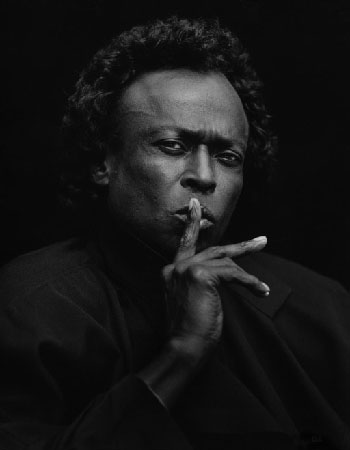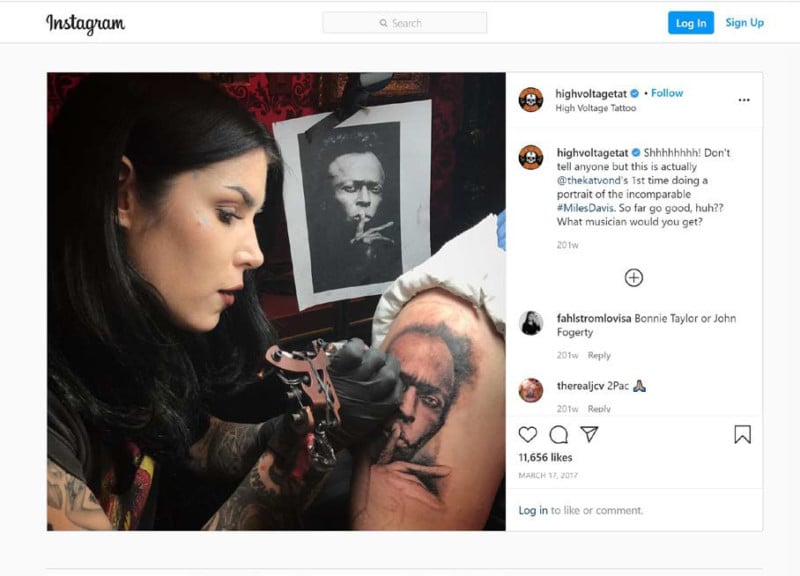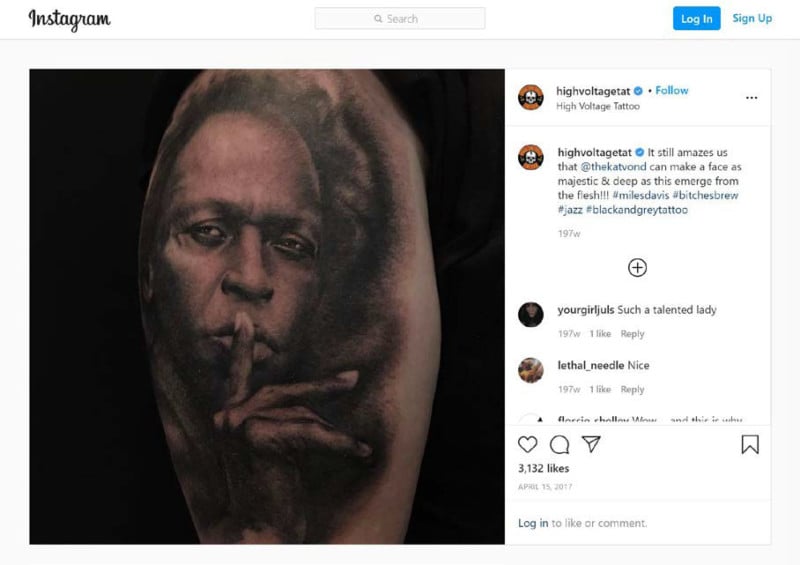![]()
Celebrity tattoo artist Kat Von D scored a resounding victory in the copyright infringement trial over her unlicensed use of a photograph of Miles Davis for a tattoo she inked on a client.
On Friday, jurors in a Los Angeles federal court took less than three hours to unanimously rule that Von D did not infringe on photographer Jeff Sedlik’s copyright when she used his famed 1989 image of jazz musician Davis as the basis of a tattoo on her friend Blake Farmer — that she inked free-of-charge for him.



The jury ruled that Von D’s reproduction was not similar enough to Sedlik’s portrait of Davis that she needed to have paid permission from the photographer and
The eight jurors decided that Von D’s tattoo — well as her planning sketch and four related social media posts — were not “substantially similar” to Sedlik’s copyrighted portrait of jazz legend Miles Davis at the center of the trial and therefore did not violate copyright law.
Following the four-day trial, the jury also found that three other social media posts made to Von D’s personal and business accounts that also referenced the photo qualified as “fair use.”
‘This Case Should Never Have Been Brought’
“It’s been two years of a nightmare, worrying about the outcome. Not just for me but for all my fellow tattooers and all the people who have been fans of people they’ve gotten tattooed,” Von D told reporters after the verdict according to Rolling Stone.
“I knew that if we didn’t fight this that I just think it would have done so much harm to an industry that has struggled for so long to do good things and be a good example of art in this world.”
“This case should never have been brought,” Kat Von D’s lawyer Alan Grodsky added.
“It took the jury two hours to come to the same conclusion that everybody should have come to from the start: That what happened here was not an infringement.”
However, Sedlik’s lawyer Robert Allen told reporters that the photographer plans to appeal the verdict.
“Obviously, we’re very disappointed,” Sedlik’s attorney said.
“There are certain issues that never should have gone to the jury. The first, whether the tattoo and the photograph were substantially similar.
“Not only are they substantially similar, but they’re strikingly similar.”
The trial was the latest battle in what defines “fair use” of copyrighted material following the U.S. Supreme Court’s recent ruling on The Andy Warhol Foundation v. Lynn Goldsmith case.
In May last year, America’s highest court held that Warhol’s portraits of music icon Prince was not fair use of Goldsmith’s copyrighted photo, and ruled that Warhol’s work shared the same commercial purpose as the original image photo of Prince.
Image credits: All photos via court documents.
